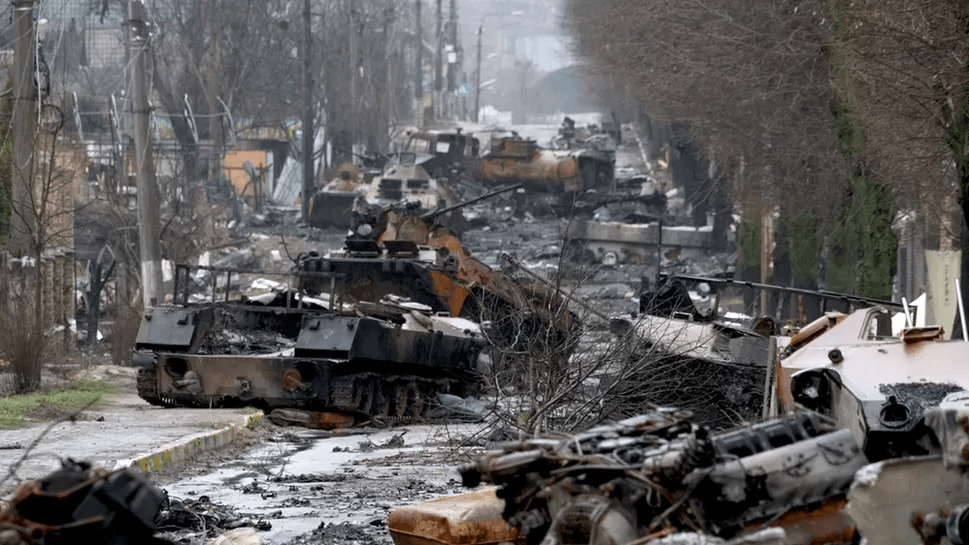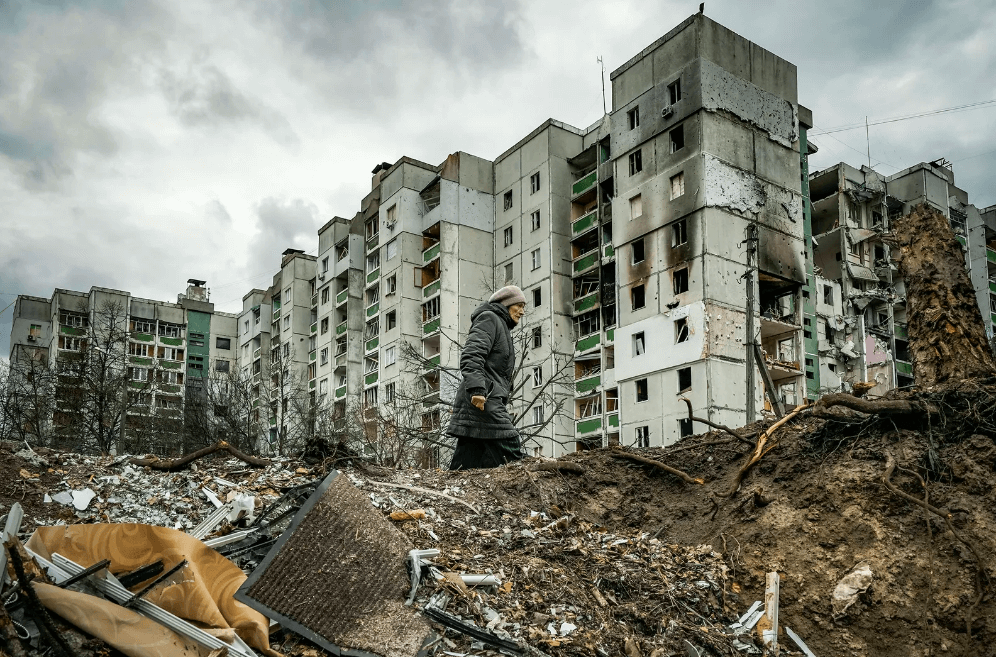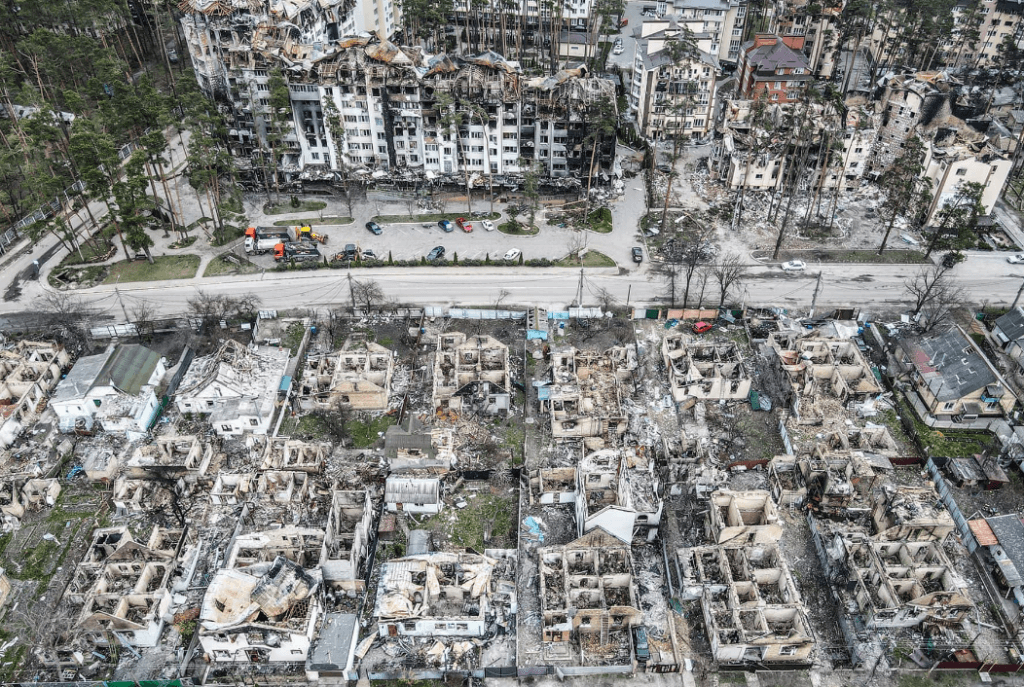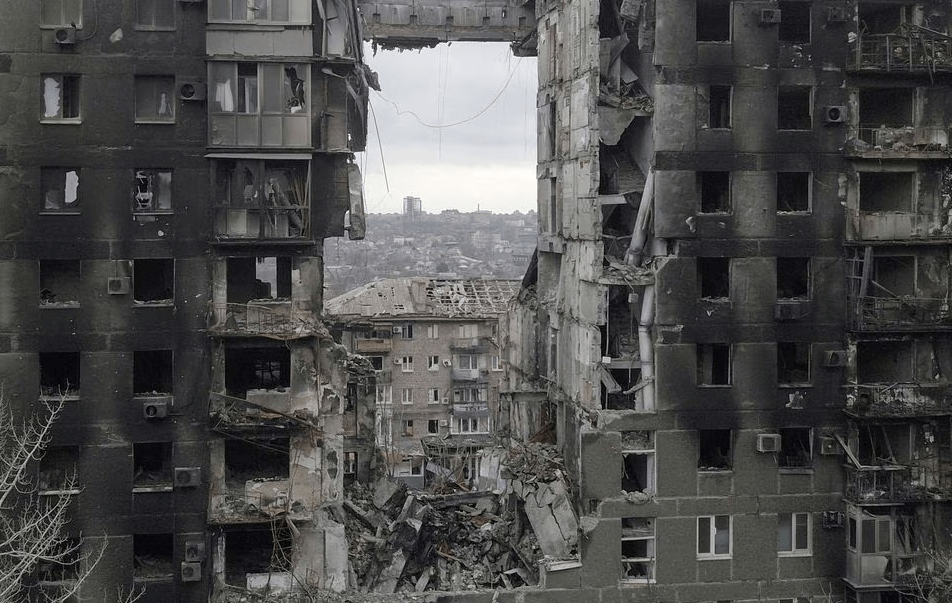The Russian invasion of Ukraine began on February 24, 2022, when Russia launched a large-scale attack on Ukraine, its neighbor to the southwest. The invasion has been met with widespread international condemnation, and many countries have imposed sanctions on Russia.
Click to Read Sections:
- 1 Background and Lead Up to the Invasion
- 2 Here are some of the major developments early in the war:
- 3 Trench Warfare in the Farmlands
- 4 Agreement on Grain Shipments Eases Shortages, But is Quickly Broken by Russia
- 5 Russia Targets Civilians
- 6 Drone Wars
- 7 Russia Attempts to Annex Eastern Ukraine
- 8 Involvement of The Wagner Group in Ukraine
- 9 Ukraine War Continues as World Powers Choose Sides
Background and Lead Up to the Invasion
The lead-up to Russia’s invasion of Ukraine began in 2014, when Russia annexed the Crimean Peninsula from Ukraine. The annexation was a violation of international law, and it was met with widespread international condemnation.
In the years since the annexation, Russia has been supporting separatists in eastern Ukraine, who have been fighting a war against the Ukrainian government. The war has killed over 14,000 people and displaced millions more.
In 2021, Russia began amassing troops on Ukraine’s borders. The United States and its allies warned Russia that an invasion would be met with severe consequences. However, Russia ignored the warnings and launched a full-scale invasion of Ukraine on February 24, 2022.

Here are some of the major developments early in the war:
- February 24: Russia launches a full-scale invasion of Ukraine, attacking its military bases and infrastructure.
- February 25: Russian forces enter Kyiv, the capital of Ukraine.
- February 26: Ukrainian President Volodymyr Zelenskyy refuses to flee Kyiv and calls on citizens to defend the city.
- February 27: The United Nations Security Council votes to condemn the Russian invasion, but Russia vetoes the resolution.
- March 1: The European Union agrees to close its airspace to Russian aircraft.
- March 8: The United States and its allies announce a ban on Russian oil imports.
- March 16: The International Criminal Court (ICC) opens an investigation into possible war crimes committed in Ukraine.
- March 25: Russia withdraws its forces from northern Ukraine after failing to capture Kyiv.
- April 18: Russia launches a new offensive in eastern Ukraine.
- May 9: Russia celebrates Victory Day, but its victory in Ukraine remains elusive.
- June 24: Russia captures the city of Severodonetsk in eastern Ukraine.
- July 7: Russia is accused of using cluster bombs in Ukraine, which are banned by international law.

Trench Warfare in the Farmlands
In the war in Ukraine, trench warfare has been used in some areas, particularly in the eastern part of the country. This is because the terrain is well-suited for trench warfare, with flat fields and plenty of cover.
Trench warfare has been used in many wars, including the First World War and the Second World War. However, it is not a common tactic in modern warfare, as it is vulnerable to air strikes and other modern weapons.
The use of trench warfare in Ukrainian farm fields has had a devastating impact on agriculture. Many farmers have been forced to abandon their fields, and the land has been littered with landmines and other explosives. This has made it difficult to plant crops and harvest food, and it has also posed a danger to civilian farmers.
Agreement on Grain Shipments Eases Shortages, But is Quickly Broken by Russia
In July 2022, Russia, Ukraine, Turkey, and the United Nations (UN) agreed on a deal to allow grain shipments from Ukraine. The deal was brokered by the UN and Turkey, and it was seen as a major breakthrough in efforts to alleviate the global food crisis caused by the war in Ukraine.
Under the deal, Ukraine would export grain from ports on the Black Sea. The ships would travel through a safe corridor set up in the Black Sea and stop in Istanbul, where they would be checked by inspectors from Russia, Ukraine, Turkey, and the UN before continuing to the final destination.
Since the deal was signed, more than 1.5 million tons of grain have been exported from Ukraine. This is a significant amount, but it is still far short of the amount that Ukraine needs to export in order to meet its food export commitments.
In July 2023, Russia fired missiles at a Ukrainian grain storage facility in the Black Sea port of Odesa. The attack destroyed 100 tons of peas and 20 tons of barley, and it also damaged a nearby grain elevator.
The attack was condemned by the United Nations, which called it a “clear violation” of the agreement to allow grain shipments from Ukraine. The UN also said that the attack could have a “devastating impact” on global food security.
The attack is just one example of how Russia is using its naval power to blockade Ukrainian ports and prevent grain from being exported.
The blockade is having a devastating impact on global food security. Ukraine is a major exporter of grain, and the blockade is preventing millions of tons of grain from reaching markets around the world. This is driving up food prices and creating a food crisis in many developing countries.
Russia Targets Civilians
There have been numerous reports of Russia targeting civilians in the war in Ukraine. These reports have been documented by human rights groups, journalists, and the United Nations.
Some of the most egregious examples of Russian targeting of civilians include:
- The bombing of a maternity hospital in Mariupol on March 9, 2022, which killed three people, including a child.
- The shelling of a theater in Mariupol on March 16, 2022, which killed over 300 people, including many children.
- The shelling of a train station in Kramatorsk on April 8, 2022, which killed 52 people, including many children.
- The bombing of a shopping mall in Kremenchuk on June 27, 2022, which killed at least 18 people.
The United Nations estimates that over 10,000 civilians have been killed in the war in Ukraine, and the true number is likely much higher. The targeting of civilians is a war crime that is prohibited under international law, and those responsible can be held accountable. The International Criminal Court (ICC) is investigating possible war crimes committed in Ukraine, and it is possible that Russian leaders could be charged with these crimes.

Drone Wars
Drones have been used extensively in the war in Ukraine, both by Russia and Ukraine. They have been used for a variety of purposes, including surveillance, reconnaissance, supply delivery, and attack.
Drones have been used successfully by both Russia and Ukraine in the war. However, they have also been vulnerable to being shot down by enemy fire.
Russia Attempts to Annex Eastern Ukraine
Russia has been attempting to annex eastern Ukraine to form a land bridge to Crimea since 2014. In 2014, Russia began supporting separatists in eastern Ukraine. These separatists are fighting against the Ukrainian government, and they have control of parts of the Donetsk and Luhansk regions. Russia has provided the separatists with weapons, training, and financial assistance.
The full invasion of Ukraine was aimed at taking control of all the country, but it has been focused on eastern Ukraine so far. Russia has made significant gains in eastern Ukraine, and it is now in control of most of the Donetsk and Luhansk regions.
If Russia is successful in annexing eastern Ukraine, it would create a land bridge between Crimea and mainland Russia. This would give Russia control of a strategic waterway and would also allow it to project its power more easily into the Black Sea.
Involvement of The Wagner Group in Ukraine
The Wagner Group is a Russian private military company (PMC) that has been accused of human rights abuses and war crimes. The group has been active in eastern Ukraine since 2014, and it has been used by Russia to support separatists in the region.
The Wagner Group has been involved in some of the most brutal fighting in eastern Ukraine. The group has been accused of looting, torture, and executions.
In June 2022, the Wagner Group suffered heavy losses in the Battle of Severodonetsk. The group is believed to have lost hundreds of fighters in the battle, and it is now struggling to recruit new members.
The Wagner Group is also facing financial difficulties. The group is believed to be heavily reliant on funding from the Kremlin, and the sanctions imposed on Russia have made it difficult for the group to get money.
Wagner Group Stages an Unsuccessful Rebellion
The Wagner Group staged a rebellion in June 20231. This came after a period of increasing tensions between the Russian Ministry of Defense and the leader of Wagner, Yevgeny Prigozhin.
Prigozhin had been contemplating a mutiny for some time. The feud escalated dramatically when Russia’s defense minister announced that Wagner soldiers would have to sign contracts with his ministry. In effect, Wagner would cease to exist. Prigozhin, once Putin’s trusted ally and former cook, was at a personal crossroads.
The answer came on Friday evening when he posted another provocative video on his Telegram channel. It showed the apparent aftermath of a missile strike on a leafy Wagner camp. Prigozhin claimed Russia’s defense ministry had carried out the attack, causing “many victims”.
However, an agreement to settle this conflict was reached between the two sides the next day, June 24, 2023, which is why the coup didn’t succeed.
In August 2023, Yevgeny Prigozhin was confirmed dead in a plane crash in Russia. It is assumed his private jet traveling from Moscow to St. Petersburg was shot down, in an ‘assassination’ two months after the failed coup.
As of August 2023, the Wagner Group is still fighting in Ukraine, but its role in the conflict has been diminished in recent months. The group has been involved in some of the heaviest fighting in the Donbas region, but it has also been hit hard by Ukrainian forces.
Ukraine War Continues as World Powers Choose Sides
The war is not just a conflict between Russia and Ukraine. It is also a proxy war between Russia and the West. Iran is now a part of this proxy war, and its involvement could have significant implications for the future of the conflict.
Iran has provided Russia with hundreds of drones, including combat drones that can be armed with missiles. The drones could be used to attack Ukrainian forces and infrastructure.
Iran has also provided Russia with financial assistance, including loans and oil. This assistance could help Russia to offset the impact of the sanctions imposed by the West. While Brazil, India, China, and South Africa have so far not provided military assistance to Russia, they have formed an economic alliance with Russia under the acronym BRICS.
As of August 2023, the war in Ukraine is still ongoing, and it is unclear how it will end. However, it has already had a devastating impact on the country, with millions of people displaced and thousands killed. The war has also had a major impact on the global economy, causing energy prices to rise and disrupting supply chains.
The war in Ukraine is a major geopolitical crisis, and it is likely to have a lasting impact on the world. It is a reminder of the fragility of peace and the importance of diplomacy.

